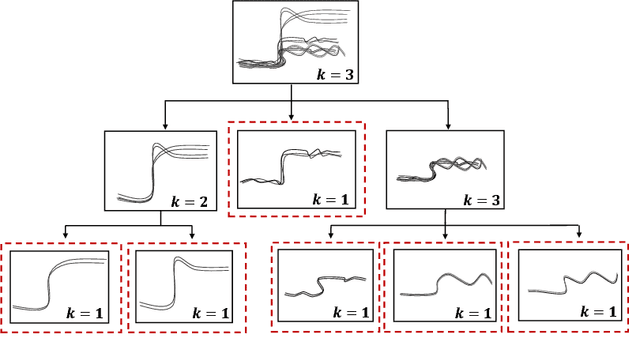Milad Afzalan
Two-stage building energy consumption clustering based on temporal and peak demand patterns
Aug 29, 2020



Abstract:Analyzing smart meter data to understand energy consumption patterns helps utilities and energy providers perform customized demand response operations. Existing energy consumption segmentation techniques use assumptions that could result in reduced quality of clusters in representing their members. We address this limitation by introducing a two-stage clustering method that more accurately captures load shape temporal patterns and peak demands. In the first stage, load shapes are clustered by allowing a large number of clusters to accurately capture variations in energy use patterns and cluster centroids are extracted by accounting for shape misalignments. In the second stage, clusters of similar centroid and power magnitude range are merged by using Dynamic Time Warping. We used three datasets consisting of ~250 households (~15000 profiles) to demonstrate the performance improvement, compared to baseline methods, and discuss the impact on energy management.
An Automated Spectral Clustering for Multi-scale Data
Feb 06, 2019



Abstract:Spectral clustering algorithms typically require a priori selection of input parameters such as the number of clusters, a scaling parameter for the affinity measure, or ranges of these values for parameter tuning. Despite efforts for automating the process of spectral clustering, the task of grouping data in multi-scale and higher dimensional spaces is yet to be explored. This study presents a spectral clustering heuristic algorithm that obviates the need for an input by estimating the parameters from the data itself. Specifically, it introduces the heuristic of iterative eigengap search with (1) global scaling and (2) local scaling. These approaches estimate the scaling parameter and implement iterative eigengap quantification along a search tree to reveal dissimilarities at different scales of a feature space and identify clusters. The performance of these approaches has been tested on various real-world datasets of power variation with multi-scale nature and gene expression. Our findings show that iterative eigengap search with a PCA-based global scaling scheme can discover different patterns with an accuracy of higher than 90% in most cases without asking for a priori input information.
 Add to Chrome
Add to Chrome Add to Firefox
Add to Firefox Add to Edge
Add to Edge